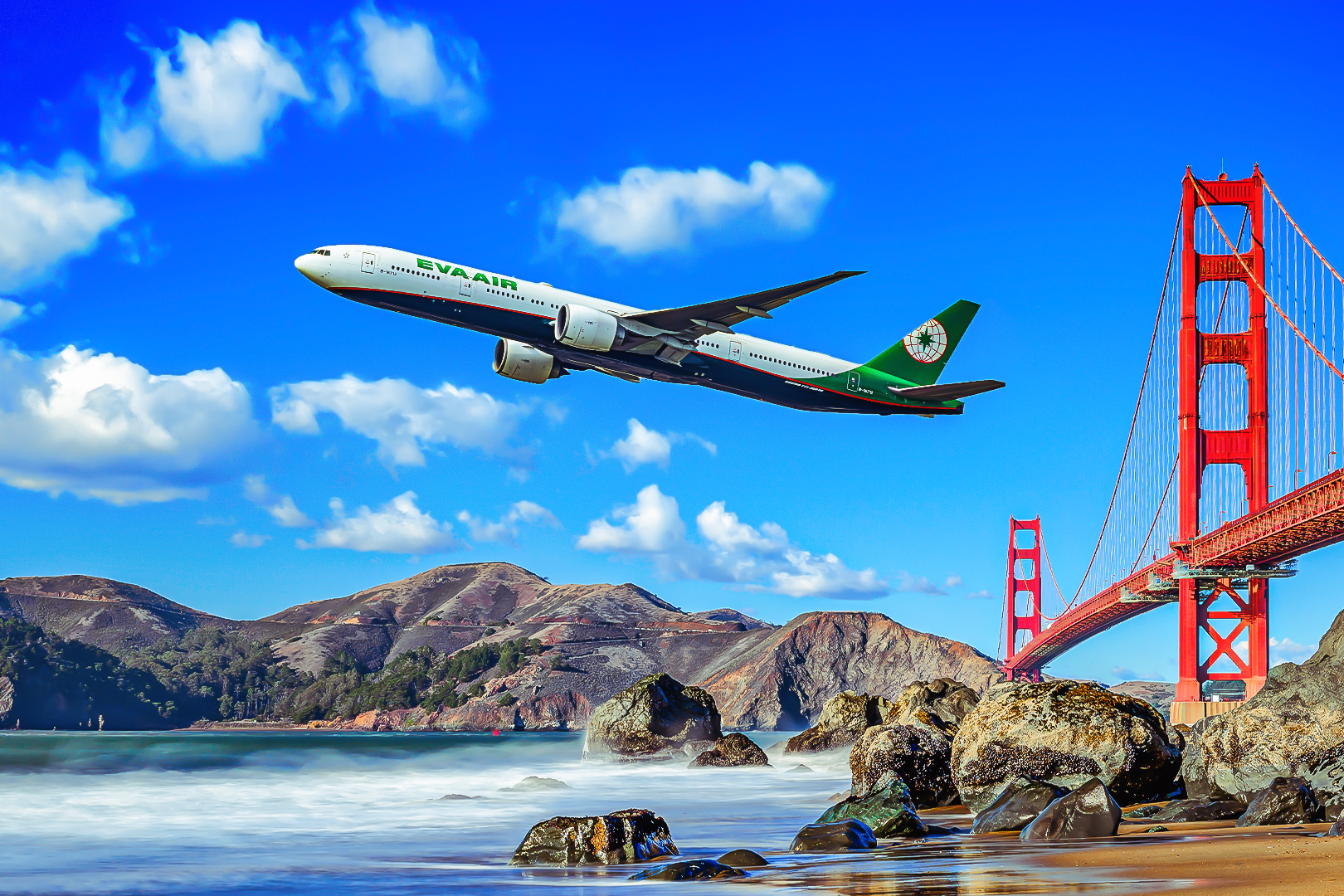North America and Asia are two major regions in the field of aviation, with each being home to some of the world's largest and most prestigious airlines. With plenty of large cities (and suitably large airports) on either side of the Pacific Ocean, demand for air travel between the two continents is high, fueled by both economic factors such as business and social factors like expat populations. Given their more convenient location when it comes to serving such routes, most transpacific corridors are from hub airports on the West Coast of North America.
These include Vancouver in Canada, as well as Seattle, San Francisco, and Los Angeles in the United States. But which are the busiest routes? Using data for April 2025 from Cirium , an aviation analytics company, let's take a closer look and see! 10 Los Angeles - Tokyo Narita 36,638 seats in each direction The strength of the demand for transpacific routes is shown by the fact that Los Angeles International Airport (LAX) to Tokyo Narita (NRT) has 36,638 seats each way this April (more than 1,200 in each direction) but still only sits in 10th place. These seats are spread across 150 flights each way during the month, averaging out at five round trips a day.

Correspondingly, five different carriers serve the route. Want answers to more key questions in aviation? Check out the rest of our guides here ! United Airlines is the only US carrier serving this route on a non-stop basis, doing so daily with its Boeing 787-9. As it happens, the 787-9 is a popular aircraft on this route, as it is also used by Japanese heavyweights Japan Airlines and ANA.
Zipair is the third and final Japanese carrier on the route, using the smaller 787-8, and Singapore Airlines' 777-300ERs (which continue to Singapore) complete the set. 9 San Francisco - Seoul 38,313 seats in each direction The transpacific corridor between San Francisco International (SFO) and Seoul Incheon Airport (ICN) ranks ninth on the list, and is an interesting one in the sense that it offers more seats than Los Angeles to Tokyo Narita despite there being fewer flights. Indeed, this April, its 38,313 seats each way are spread across 137 round trips, with this figure comprising four different airlines with varying frequencies.
Once again, United Airlines is the only US carrier on the route, but it has the highest frequency, with two round trips a day with its 787-9s making a grand total of 60 monthly rotations. Meanwhile, daily services are offered by Korean Air's 777-300ERs and Asiana Airlines' Airbus A350-900s. Air Premia, which also flies the 787-9 on the route, has a lower frequency, with 17 rotations (four per week) this April.
8 Seattle - Taipei 39,551 outbound and 39,245 inbound seats The route across the Pacific Ocean from Seattle Tacoma International (SEA) to Taipei Taoyuan Airport (TPE) in Taiwan continues the trend of having more seats with fewer flights. Indeed, this April, the route will see 39,551 outbound seats offered on 125 flights, with the return journey serviced by 39,245 inbound seats on 124 flights. The difference comes from China Airlines' A350-900s operating one extra westbound rotation this month, with 22 outbound and 21 inbound flights.
The other three carriers on this route have more uniformity in their schedules, with identical numbers of flights in each direction. Delta Air Lines and Starlux Airlines also use the A350-900 on this route, and serve it on a daily basis, with 30 round trips this April. Meanwhile, in addition to daily flights with the 787-10, EVA Air has scheduled an additional 13 (three per week) with the 777-300ER.
7 San Francisco - Hong Kong 40,488 seats in each direction Returning to the Californian hub that is San Francisco International Airport , the seventh busiest transpacific route by seat availability this April connects the West Coast facility with Hong Kong (HKG). Just two carriers will serve this route in April 2025, but, across 123 flights in each direction, they will combine to offer an impressive 40,488 seats each way. In this instance, the airlines in question are: Cathay Pacific United Airlines United Airlines serves the route twice a day using its 777-300ERs.
According to aeroLOPA , these US-built widebody twinjets have 60 Polaris business class flatbeds, 24 Premium Plus premium economy recliners, and 266 economy class seats onboard. Hong Kong flag carrier Cathay Pacific accounts for the remaining 63 round trips, split between 42 with the A350-900 and 21 with the 777-300ER. 6 Honolulu - Tokyo Narita 40,730 seats in each direction An interesting exception to the rule of West Coast hubs dominating the rankings is Hawaii's Honolulu International Airport (HNL).
This facility offers considerable capacity to both of Tokyo's main airports, with Narita having slightly fewer seats, at 40,730 in each direction this April. Four different carriers serve this somewhat shorter transpacific route, with some rather rare aircraft types used on the corridor. ANA has the most flights and seats, with 43 rotations with the A380 accounting for 22,360 seats each way.
The Japanese carrier operates the superjumbo either daily or twice daily on this route. Meanwhile, daily rotations (30 each way) are also offered by Hawaiian Airlines' A330-200s and Japan Airlines' 767-300s. Zipair's 787-8s make up the remaining capacity, operating 14 round trips (three per week).
5 Honolulu - Tokyo Haneda 44,700 outbound and 44,880 inbound seats Staying in Honolulu, the Hawaiian facility has even more flights and seats on offer to Tokyo Haneda Airport (HND) this April, with 180 rotations offering 44,700 outbound and 44,880 inbound seats. This averages out at a whopping six return flights a day, with Delta Air Lines and ANA accounting for one of these apiece. These carriers respectively use the 767-300 and the 787-8 on this transpacific route.
Japan Airlines is notable for having retained eight-abreast economy seating on the Boeing 787. Meanwhile, the remaining four daily round trips are split two apiece between Hawaiian Airlines' A330-200s and Japan Airlines' 787-9s. The former of these aircraft types features 18 business class flatbeds and 260 economy class seats onboard in a relatively high-density configuration.
Contrastingly, JAL's Dreamliners are known for their low-density eight-abreast economy layout, and these offer: 28 business class flatbeds. 21 premium economy recliners. 190 economy class seats.
4 Los Angeles - Tokyo Haneda 52,143 seats in each direction Now moving north of the 50,000-seat mark, the five airlines that serve the transpacific route from Los Angeles to Tokyo Haneda offer a whopping 52,143 seats across 210 flights (seven per day) in each direction. Two of these carriers operate 60 round trips for an average of two per day, namely American Airlines with its 787-8s and ANA (33 rotations with the 787-9 and 27 with the 787-8). The other three carriers on the route operate daily flights, with this corridor being notable for the fact that it is served by all three major US legacy operators.
Indeed, American Airlines' rivals Delta and United are also present, with the former using the A350-900, and the latter opting for the 787-10. Japan Airlines completes the set, operating daily flights from Los Angeles to Tokyo Haneda with the 777-300ER. 3 Los Angeles - Taipei 57,262 outbound and 57,314 inbound seats Moving into the top three routes, the transpacific corridor from Los Angeles International to Taiwan's Taipei Taoyuan Airport sees almost six flights a day in each direction on average, with 176 round trips penciled in for April 2025.
Interestingly, none of these are operated by US-based airlines, with all three carriers on the route instead being based in Taiwan. EVA Air's 777-300ERs account for 90 flights each way. Meanwhile, elsewhere in the Taiwanese commercial aviation sector, Starlux Airlines and China Airlines are both offering 43 flights each way between Los Angeles and Taipei this month.
The former of these carriers is uniform in this regard, always operating the A350-900, while the latter chops and changes between two aircraft types. These have different figures on the outbound and inbound legs, namely: A350-900: 15 outbound and 14 inbound flights. 777-300ER: 28 outbound and 29 inbound flights.
2 Los Angeles - Seoul 60,741 seats in each direction The transpacific corridor from Los Angeles International to Seoul Incheon mirrors third-placed Los Angeles - Taipei Taoyuan in the sense that none of its 149 flights in each direction for April 2025 are operated by US-based carriers. Instead, South Korean operators rule the roost, with Air Premia's 787-9s offering the lowest frequency. There are 29 rotations scheduled with these jets (daily except April 2nd).
Meanwhile, the remaining 120 round trips are accounted for by Korean Air and Asiana Airlines, each of whom flies twice a day in each direction between Los Angeles International and Seoul Incheon Airport. This route is ideal for fans of widebody double-decker quadjets, as Korean Air deploys its Boeing 747-8 aircraft on the route alongside Asiana's A380s. The higher capacity of these aircraft is what makes this route rank so highly in terms of seats, despite having fewer flights.
1 San Francisco - Taipei 68,670 seats in each direction Sitting pretty at the top of the list is the transpacific corridor from San Francisco to Taipei, which, this April, is served by 210 flights and 68,670 seats in each direction, making for a whopping daily average of seven round trips. Two of these are operated by United Airlines, which splits its coverage between the 777-200ER and the 777-300ER on this route. China Airlines also flies daily using the 777-300ER.
The 777-300ER is also favored by EVA Air, which operates three flights a day in each direction between San Francisco and Taipei. These services alone account for 29,970 of the 68,670 seats that will be offered in each direction on this transpacific corridor in April 2025. Starlux Airlines is the outlier on this route, being the only carrier to operate Airbus jets, with its A350-900 plying the corridor on a daily basis.
.
Top

The 10 Busiest Routes By Seats Between North America & Asia

The transpacific market is a very busy one!











